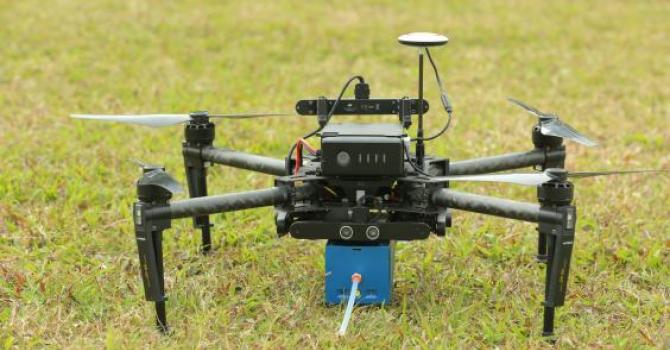SCMP: Shenzhen and Hong Kong show how intercity alliances can tackle pollution
Michelle Wong highlights how Shenzhen and Hong Kong are working together in an effort to reduce ship emissions, one of the nagging sources of poor air quality in the Greater Bay Area
Air quality is a hot topic of discussion among global leaders as a threat to the quality of life, including in Hong Kong. While the effects of air pollution may not be immediately visible, the long-term public health concerns and fatalities associated with poor air quality are alarming.
Then again, they bring into focus the efforts currently in place to manage the problem, and the potential to share these efforts across the Greater Bay Area, in light of President Xi Jinping’s national strategy on “ecological civilisation”.
Is controlling air quality even possible? This is a valid question in the context of linked cities that can potentially give rise to more urban economic hubs in the region. Yet, this is a question Hong Kong has long answered with a rather optimistic “yes”.
Let’s take a look at what Hong Kong has been doing so far to address the problem. Over the years, the government has looked at the amount of ambient concentrations in the air to gauge its air control solutions, extending financial support to curb emission sources on both lands and at sea.
To address vehicle emissions, it has subsidised a replacement scheme for pre-Euro 4 diesel commercial vehicles, the replacement of filters for taxis and LPG-powered public light buses, as well as the retrofitting of franchised buses’ selective catalytic reduction devices, among others.
As a result, overall emissions and ambient concentrations of assorted signature pollutants have been markedly reduced, especially in the past few years – except for nitrogen dioxide, whose latest annual average concentrations continue to exceed the World Health Organisation’s Air Quality Guidelines. The identified culprit? Ship emissions, which contributed 37 percent of nitrogen oxide emissions among local air pollution emission sources in Hong Kong in 2015.
To help reduce these emissions, the Hong Kong government in July 2015 implemented a law mandating that all ocean-going vessels (including cargo and cruise ships) switch when at berth to clean-air-compliant fuel, such as low-sulphur marine fuel (with less than 0.5 percent sulphur content), LPG, and any other fuel approved by the director of environmental protection.
While such regulation has generated an immediate, significant effect, especially in the coastal areas in Hong Kong, it does not cover the full expanse of water, traversed by marine vessels, that remains vulnerable to polluting ship emissions outside Hong Kong’s fuel regulation.
Fortunately, the Shenzhen-Hong Kong Office for Marine Emissions and Control, led by China’s Maritime Safety Administration of the Ministry of Transport, has come to the rescue to complement Hong Kong’s efforts against ship emissions across the region.
Here’s an instance of neighbours working together to keep the larger community safe and the air breathable.
The co-working platform, established in December, will advance regional work to implement a domestic marine emission control area in the Pearl River Delta – an initiative prompted by December 2016 signed an agreement on the Prevention and Control of Air Pollution from Vessels between the Mainland and Hong Kong, between Hong Kong’s Environment Bureau and China’s Maritime Safety Administration.
The office for marine emissions and control is a major step towards acknowledging that Hong Kong’s air quality is vulnerable to the impact of the Greater Bay Area development plan, as Hong Kong shares a common air shed with the delta and the wider Guangdong region.
What’s encouraging, as well as the obvious collaboration between governments, is how it is attracting the participation of academia from the two jurisdictions. Universities, including the Hong Kong University of Science and Technology, City University of Hong Kong, and the Hong Kong Polytechnic University, are part of the office’s “Expert Advisory Committee”, whose work includes developing a marine emissions control plan, conducting Shenzhen-Hong Kong marine emissions control research, and promoting innovation in and application of marine emissions prevention and control technology.
Needless to say, these recent developments offer a positive future for scientific-based policymaking programmes that can hugely benefit people’s health and wellness, not just in Hong Kong, but the whole region.
While there is more work to do, the shared road map on “ecological civilisation” may provide the momentum to inspire continuous collaboration and accelerate air clean-up in the region. The Greater Bay Area will not only present opportunities for economic growth, but is an important test bed and role model of sustainability collaboration for China and the rest of the world.
Imagine where such unified efforts can lead. We shouldn’t miss this golden opportunity to use the Greater Bay Area example to influence policy and improve the globally connected air we breathe.
***
Michelle Wong is a research associate in the Institute for the Environment at Hong Kong University of Science and Technology.
This article appeared in the South China Morning Post print edition as: How intercity alliances can tackle our polluted air (on SCMP dated 12 Feb 2018)




